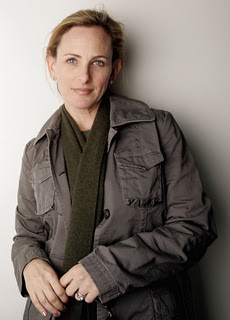My Deaf Family, My New Web Series?
 Oscar-winning deaf actress Marlee Matlin is producing a new reality show, My Deaf Family. It follows the Firl family – father Leslie and mother Bridgetta are both deaf, and they have four children, two of whom are hearing (Jared and Elijah) and two of whom are deaf (Gideon and Sabrina). Our protagonist is the oldest hearing son, Jared (15), who functions as our narrator through the voice-overs and subtitles that are used to translate his parents’ and siblings’ sign language for viewers in the pilot. Matlin initially pitched the series to networks, but despite positive feedback, was turned down.
Oscar-winning deaf actress Marlee Matlin is producing a new reality show, My Deaf Family. It follows the Firl family – father Leslie and mother Bridgetta are both deaf, and they have four children, two of whom are hearing (Jared and Elijah) and two of whom are deaf (Gideon and Sabrina). Our protagonist is the oldest hearing son, Jared (15), who functions as our narrator through the voice-overs and subtitles that are used to translate his parents’ and siblings’ sign language for viewers in the pilot. Matlin initially pitched the series to networks, but despite positive feedback, was turned down.
In an interview with The LA Times, Matlin describes the show as “a deaf/hearing version of “Little People, Big World.” Entertainment Weekly takes up this comparison, and takes the opportunity to knock the “cloying, artificial product-placed problems” of family shows currently airing on TLC (The Little Couple, 19 Kids and Counting, and others as well as Little People, Big World and Jon and Kate Plus 8). But My Deaf Family, as seen in the pilot, could provide a much more informative, nuanced, and emotionally resonant look at the daily life of Americans in extraordinaroy circumstances.
Matlin has long been a spokesperson for the importance of captioning, on behalf of the National Association for the Deaf and other organizations, and My Deaf Family is available with closed captioning, in addition to the subtitles that appear on the screen during signed conversations. This makes airing My Deaf Family on YouTube a welcome complement to Google and YouTube’s efforts to promote automated captioning of videos, which I tried out in its initial stages last fall. Google’s policy blog covered Matlin’s series, and the YouTube blog posted full (captioned) video of her talk at Google headquarters as well as statistics about the show’s success on YouTube, where it has over 87,000 views.
Working with Matlin and My Deaf Family is a potentially powerful collaboration for Google/YouTube as they attempt to make autocaptioning a reality and accessibility a priority. In his history of closed-captioned television, Greg Downey found that captioning became a priority to the US government only once the beneficiaries of captioning were understood to be not only the deaf/hard of hearing audiences, but students and immigrants learning English, part of a long history of mainstream benefits leading to much-delayed improvements for people with disabilities. In the digital realm, though, captions already have mainstream value – textual versions of multimedia content are useful in search engine optimization, in improving search engine algorithms, in translating material, and in providing transcripts of events to be used by bloggers with a quick turnaround time. The advantage of incorporating My Deaf Family is that captioning and accessibility can be tied to entertainment, and gain a cache as not necessarily a technical or niche feature, but as compelling topics in their own right, that could extend the range of entertainment options we have available.
Finally, I would suggest that Matlin could similarly benefit from YouTube. Only the 9-minute pilot has been fully finished, as Matlin still hopes for television distribution and financing, seeing YouTube as a promotional vehicle for her show. Yet, in taking the show to YouTube, Matlin told the Times
“YouTube is akin to having my own network. After a small initial outlay, I am putting the show out there myself for all to see, hoping that the reaction will be great and that sponsors and networks will see that the show can work.”
This is exactly the logic that has allowed a number of web series to take to the internet and create interesting, innovative content that might not find a home on television – The Guild, Odd Jobs, Auto-Tune the News – or that supplement television in interesting ways – Valemont, The Office: Subtle Sexuality, The Secret Life of Scientists. The Streamy awards, “honoring excellence in original web television programming and those who create it,” are now in their second year, and have already recognized several of these series, bringing them additional attention, viewers, and financial opportunities. Whether it’s increased broadband speeds, mobile video technologies, media spreadability, social networking sites, something else or a combination thereof, we’re moving beyond the struggles of Quarterlife, and allowing My Deaf Family to develop online, in adorable 9-minute chunks like this pilot, might ultimately be what allows it to succeed on its own terms, presenting deaf culture to a wide audience.



Thanks for this, Liz. So many cool things going on here. I kind of love that by making Jared the protagonist, we also kind of get this basic teen “mom-let-me -live-my-own-life” story, too. Also, Marlee Matlin’s role here serves an interesting purpose – as a visible, humanized face for the production team that also identifies with their family, something that differs greatly from a cable net like TLC. I think the visibility of Matlin (and her independent production team) could potentially serve to mitigate senses of spectacle and exploitation from a “solely profit-motivated, monolithic industry” should the show get picked up.